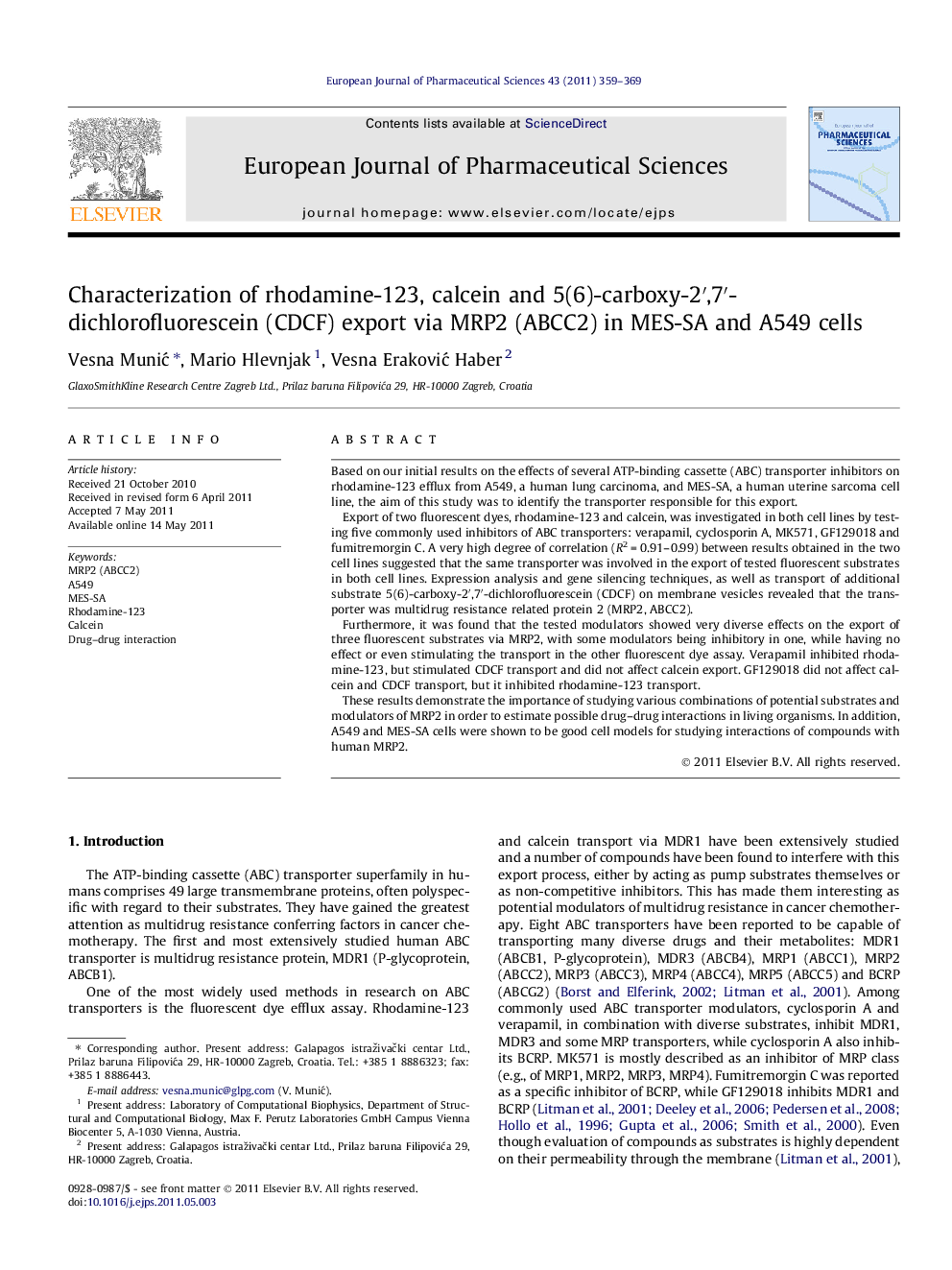| کد مقاله | کد نشریه | سال انتشار | مقاله انگلیسی | نسخه تمام متن |
|---|---|---|---|---|
| 2481117 | 1556231 | 2011 | 11 صفحه PDF | دانلود رایگان |

Based on our initial results on the effects of several ATP-binding cassette (ABC) transporter inhibitors on rhodamine-123 efflux from A549, a human lung carcinoma, and MES-SA, a human uterine sarcoma cell line, the aim of this study was to identify the transporter responsible for this export.Export of two fluorescent dyes, rhodamine-123 and calcein, was investigated in both cell lines by testing five commonly used inhibitors of ABC transporters: verapamil, cyclosporin A, MK571, GF129018 and fumitremorgin C. A very high degree of correlation (R2 = 0.91–0.99) between results obtained in the two cell lines suggested that the same transporter was involved in the export of tested fluorescent substrates in both cell lines. Expression analysis and gene silencing techniques, as well as transport of additional substrate 5(6)-carboxy-2′,7′-dichlorofluorescein (CDCF) on membrane vesicles revealed that the transporter was multidrug resistance related protein 2 (MRP2, ABCC2).Furthermore, it was found that the tested modulators showed very diverse effects on the export of three fluorescent substrates via MRP2, with some modulators being inhibitory in one, while having no effect or even stimulating the transport in the other fluorescent dye assay. Verapamil inhibited rhodamine-123, but stimulated CDCF transport and did not affect calcein export. GF129018 did not affect calcein and CDCF transport, but it inhibited rhodamine-123 transport.These results demonstrate the importance of studying various combinations of potential substrates and modulators of MRP2 in order to estimate possible drug–drug interactions in living organisms. In addition, A549 and MES-SA cells were shown to be good cell models for studying interactions of compounds with human MRP2.
Journal: European Journal of Pharmaceutical Sciences - Volume 43, Issue 5, 17 August 2011, Pages 359–369